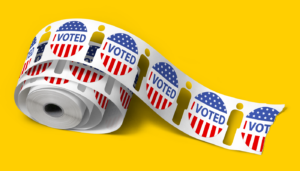“Mom, I’m fine” were the last words of 6-year-old Palestinian-American, Wadea al-Fayoume, who was stabbed 26 times and murdered on October 14. The man charged with his murder is his landlord Joseph Czuba, who is also charged for attacking Wadea’s mother, Hanaan Shahin. Shahin sustained over a dozen stab wounds from fighting off Czuba as he reportedly yelled, “You Muslims must die!” How is a landlord who was previously described as being “friendly” with the family and in the weeks prior had built Wadea a tree house, now facing trial for such heinous hate crimes?
Context is important in this story. This was not a sudden occurrence. Shahin, an immigrant from the West Bank, told investigators that Czuba had insisted earlier that week that she and her son move out of the home they were renting from him in a Chicago suburb. The timing of these requests directly corresponded to the latest escalation of violence in Israel and Palestine, and its accompanying news cycles. According to the prosecutor, Czuba’s wife told investigators that her husband had been listening to conservative talk radio in the days leading up to the murder and had become “obsessed” with the unfolding war to the point that he believed that “they were in danger and that [Shahin] was going to call over her Palestinian friends or family to harm them.”
Unfortunately, the horrific hate crimes Czuba was charged with were not the only ones against Palestinians, Muslims, or other minority groups often mistaken for Muslims in recent days. On October 17, a Sikh teen was punched on a New York City bus in a reported hate crime assault by a man who attempted to remove the teen’s turban exclaiming, “We don’t wear that in this country.” In the same week, Carl Mintz was charged with terrorism for posting on Facebook that he wanted to go into Dearborn, Mich., a predominantly Muslim and Arab city, and “hunt down Palestinians.” Two men were arrested in connection to assaulting an 18-year-old Muslim in Brooklyn, N.Y. while yelling explicit anti-Muslim slurs. The Council on American-Islamic Relations (CAIR) has reported 1,283 bias incidents against Muslims since the violence in the Middle East escalated and has tracked hundreds of inflammatory posts and hate speech that have been shared recently across social media platforms—just a few examples include Muslims and Palestinians being called “savages,” “terrorists,” and “barbarians.”
Islamophobia, an irrational fear and hostility towards Islam or Muslims, has deep roots that can be traced back to Western colonialist archetypes of the “uncivilized other.” By diminishing the complexity of individuals and essentializing Islam, these colonial powers created a seedbed for the dehumanization and generalization of people today perceived to be Muslim or Muslim-adjacent. And perhaps most importantly, these kinds of hate crimes and the rise of Islamophobia have extensive, negative mental health impacts on Muslim communities in the U.S. and around the world.
On my own campus at Stanford University, an Arab Muslim student was the victim of a hit and run on November 3 that landed him in the hospital. According to a statement by Stanford’s Department of Public Safety, the Islamophobic assailant made eye contact with the student, accelerated his car to strike him, and then yelled, “F*** you people” as he hit the student before driving off. Other forms of aggression over the past few weeks included Muslims receiving death threats, hijabs being torn off, and protesters being shot at, run over, spat at, and harassed. Another egregious form of intimidation resulted in Muslim student leaders at colleges across the country who signed their names on public statements, later found their pictures and names plastered on the side of smear trucks parked on their campus, a practice known as doxxing. Doxxing is not a new phenomenon and research has shown that such practices have a significant impact on the emotional and mental health of the victims including causing anxiety, Post Traumatic Stress Disorder (PTSD), and Complex PTSD. In fact, 44% of doxxing victims have reported experiencing significant mental health consequences as a result of such targeted attacks.
Some scholars who study hate crimes have found that spikes in Islamophobic hate crimes strongly correlate with media reporting. This, too, is not a new phenomenon. What began as diaries and travelogs of Europeans claiming license and authority to represent the Muslim and Arab world to the West—all while justifying colonialism and fueling imperial expansion—has been replaced by a new medium: the modern media machine. The power of the written word, accompanied by caricatural images portraying Muslims and Arabs as subhuman or in need of saving, shaped centuries of enduring bias.
Sensationalized stories that sow seeds of paranoia and cement the “other” as someone that must be feared and even eliminated, are not innocently relaying information. Rather they are perpetuating biased narratives about minority communities. When the average person is inundated with news cycles about the instability in the Middle East without proper context or knowledge of the lived experiences of Muslims, they are being conditioned to distrust the Muslim family living next door. This unexamined implicit bias is undeniably shaped by the media. Inconsistencies in terminology used in reporting and the disproportionatereporting of negative incidents involving Muslims contribute to distorted perceptions of this community. According to the Institute for Social Policy and Understanding (ISPU), every year since 2016, over 60% of American Muslims have reported experiencing at least one instance of religious discrimination—higher than all other religious groups in the U.S.
The unpredictability of the time, place, and circumstances of Islamophobic incidents puts many Muslims in a nearly continuous state of hypervigilance. This insecurity can directly translate into deleterious mental health implications for Muslim Americans. We can better understand the influence of these Islamophobic interactions on the emergence of psychological problems. This socioecological model is often depicted over four levels: individual, interpersonal, community, and policy.
On an individual level, studies show that experiencing Islamophobia is associated with poorer mental health outcomes in both Muslims and those perceived to be Muslim. Discrimination due to Muslim identity is associated with a greater number of depressive symptoms, fear and anxiety, lower self-esteem, and overall psychological distress. Daily repetitive harassment that Muslims face may be the biggest factor contributing to long-term mental health issues, while violent, hate-motivated crimes can increase fear, hypervigilance, and identity disturbances. Furthermore, early exposure to harassment affects the developmental well-being of Muslim youth; twice as many Muslim children report being bullied compared to the general U.S. population. In a 2021 California-based study, 56% of Muslim school-age respondents reported feeling unsafe at school due to their identity, and 20% of them reported missing school due to these feelings.
On an interpersonal level, individuals who have previously experienced discriminatory interactions are more likely to suffer from continuous anticipationof harassment that puts them at a higher risk of developing psychosocial problems. This anticipatory fear in the public arena often results in social marginalization that deprives Muslims of the health-promoting effects of social engagement. For many Muslims, there are heightened fears around relatively routine undertakings such as going for a walk with one’s family or attending worship services. These fears stem from tragic Islamophobic attacks such as the 2021 murder of the Afzal family in London, ON—a Muslim family who was run over while taking a walk together. The 2019 live-streamed Christchurch Mosque shooting in New Zealand that killed 49 people and the 2017 Quebec Mosque shooting that killed six and severely injured eight peaceful worshipers are still very fresh in many Muslims’ minds. Even simply engaging with one’s neighbors runs the risk of ending in tragedy, as was seen in the 2015 murder of three visibly Muslim youth from Chapel Hill, who were gunned down by their Islamophobic neighbor.
On a communal level, Islamophobic incidents that target Muslims in any part of the U.S. perpetuate a sense of insecurity and could result in trauma by proxy for other American Muslims. In speaking with many families of school-aged children, I found that they each repeated the same thing: All they could see was Wadea when they hugged their own child this past week—myself included. Many American Muslims also reported that the bias and misinformation in the current news cycle is causing them to experience flashbacks to the hateful, xenophobic rhetoric spewed in the aftermath of the 2001 tragedy of 9/11 and during the lead-up to the 2016 presidential elections. Though belonging to a community is often a protective factor, if this community is a stigmatized group, its members may internalize hateful stereotypes that could eventually lead to identity concealment and in turn negative health outcomes. Two common examplesinclude removal of religiously identifying clothing, such as the hijab, due to feeling unsafe or anglicizing non-English “Muslim” names in an effort to be white-passing or undetected as a Muslim.
On a policy level, legislation passed over the last three decades have contributed to growing Islamophobia. The passing of the Patriot Act in 2001 led to increased detention, unjustified arrests, and interrogations of Muslim Americans. The 2017 Executive Order 13769, dubbed the “Muslim Ban,” coincided with an estimated 67% increase in hate crimes toward Muslims, and was an immensely anxiety-laden time for Muslims. Indeed, the American Psychological Association opposed this ban, citing concerns around serious mental health implications and increased discrimination towards those impacted by the travel ban. Research has also shown that the rhetoric and legislative decisions by the Trump administrations impacted the daily living and mental well-being of American Muslims.
These interconnected levels each pose risk to the psychological wellness of Muslims. It is imperative that we recognize and address the common thread across all of them, which includes the perpetuation of Islamophobic and anti-Palestinian tropes, as well as biased media coverage of what the former director of the office of the United Nations high commissioner for human rights, Craig Mokhiber, has called an unfolding genocide of the Palestinian people and cited as the cause of his resignation. Wadea’s parting words were meant to comfort his mom—and us. Though he is at peace now, we are far from it.




